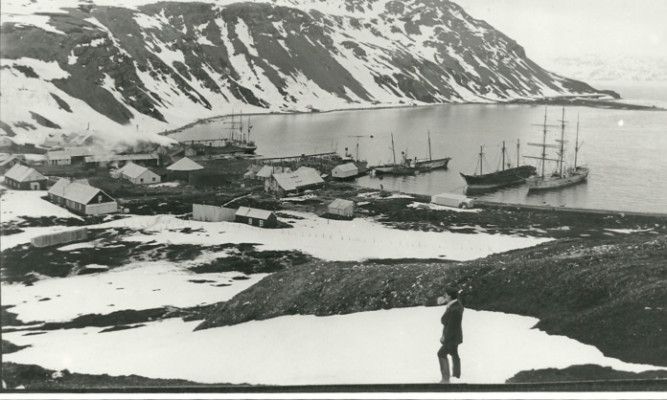He had Dundee to thank for building the RRS Discovery which helped to launch his career during the heroic age of Antarctic exploration.
But 10 years after Sir Ernest Shackleton served as third officer with Captain Robert Falcon Scott during the Discovery’s successful British National Antarctic Expedition of 1901-04 – and three years after Scott perished returning from defeat to Amundsen at the South Pole in 1912 – Sir Ernest Shackleton found himself at the centre of one of the most incredible adventure stories of all time.
The intention of Ernest Shackleton’s Imperial Trans-Antarctica expedition of 1914 – 1917 was to cross the Antarctic continent from one coast to the other via the South Pole.
Whilst the expedition ultimately failed, this classic tale of leadership and heroism is remembered as a feat of navigation, endurance and incredible bravery after Sir Ernest rescued all 27 of his crew from the jaws of death and brought them home in the face of unspeakable odds.
The expedition managed to survive the loss of their ship in the middle of the Antarctic pack ice at a time when there was no chance of contacting the outside world, let alone of being rescued.
Perhaps there was some British pride at stake following Scott’s demise a few years earlier. Shackleton wrote: “After the conquest of the South Pole by Amundsen who, by a narrow margin of days only, was in advance of the British Expedition under Scott, there remained but one great main object of Antarctic journeying the crossing of the South Polar continent from sea to sea.”
But Shackleton’s ship, the Endurance, became trapped in pack ice close to the Antarctic continent, resulting in its sinking.
On October 27, 1915, Shackleton gave the order to abandon the Norwegian-built ship and crew took the treacherous journey across the pack ice toward land, hauling their lifeboats by hand where possible, and taking to them when the ice thinned.
The crew eventually landed on the desolate Elephant Island, hundreds of miles from mainland civilisation.
Shackleton decided to take a small crew on one of the lifeboats and head to South Georgia to summon a rescue party for the remaining expedition members a decision that saved their lives. Despite failing to complete their expeditions aim, the crew are now hailed as heroes who never wavered in the face of their four month ordeal.
To celebrate the centenary of the rescue, an expedition, without the hardships, is being launched in January to retrace those steps.
On board the cruise ship will be Roddie Wordie, grandson of Sir James Wordie, a geologist and Shackleton crew member aboard the Endurance, who will be showcasing a private collection of diary extracts from his grandfather.
The tour, organised by the Ultimate Travel Company, will make its way from Ushuaia via the Falklands and South Georgia, Argentina to the white continent itself, Antarctica.
The vessel will attempt to visit Elephant Island, the site where half of Shackleton’s crew were stranded for four months after the sinking of Endurance. The collection of diary entries highlight the crew’s survival instincts and the extremities endured during the severe weather conditions.
One dramatic diary entry from Sir James reads: “In the dawn we slowly crept under care north east along the coast looking for a landing place. Glaciers and steep cliffs seemed to deny us the right. Finally about 8am we were at Cape Valentine, marked by a prominent stack and outlying skerries. Meantime we were all crunching pieces of ice, broken from the glaciers and picked up as they drifted past us, for we were frightfully thirsty 48 hours without water. That had been our fear during the night to be carried out to sea without any water.”
Roddie Wordie said: “It’s so exciting to read from grandfather’s diary of the Imperial Trans-Antarctic Expedition and visit these same places as described in the diary. It’ll be a unique experience since the diary has never been published and very few people outside the family have had an opportunity to read this brilliantly detailed account.”
To provide a more modern backdrop to the theme of polar exploration, Henry Worsley, seasoned adventurer and ex-lieutenant colonel in the British Army, will be joining the cruise immediately after his attempted solo, unsupported, crossing of the Antarctic Peninsula.
He’ll be sharing his experiences of the arduous 80 day, 1,000 mile expedition with the tour members enriching the tour with first-hand experience.
Last week Shackletons’s medals fetched £585,000 at auction.
They included Sir Ernest’s Chilean Order of Merit which beat the guide price of £4,000 to £6,000 to go for £74,500.
The medal recognises the survival and rescue of his crew from the Endurance.
Nick Van Gruisen, director of The Ultimate Travel Company, said: “To share this experience with Henry Worsely, one of Antarctica’s greatest living explorers and Roddie Wordie the grandson of the original expedition’s Geologist is a great privilege.”
